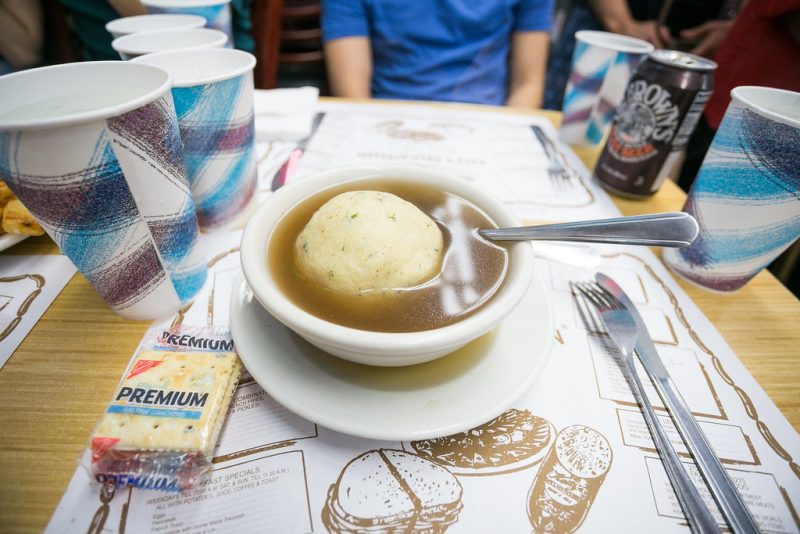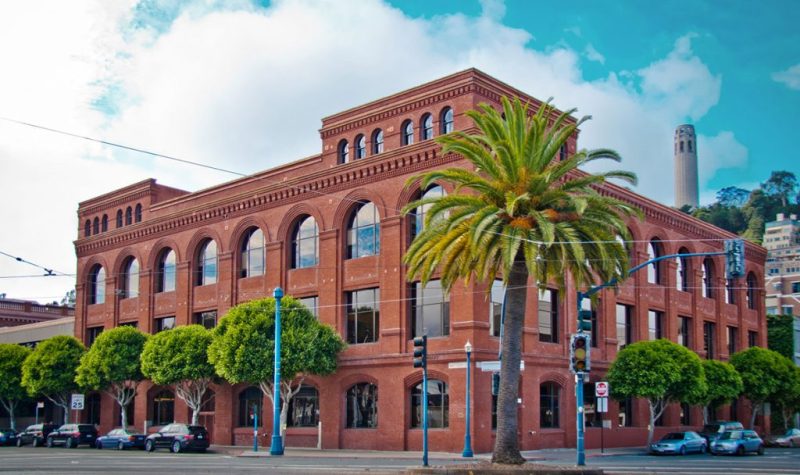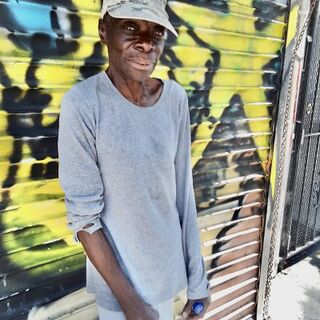Forty Years Walking Through San Francisco
"I was there..."
by Naomi Marcus, originally published as "The ghosts of San Francisco’s past are still there if you only look and listen", May 17, 2024, at sfseniorbeat.com.
Powell and Market Street, June 20, 1968. The former Woolworth’s store, once on the bottom floor of the Flood Building on the corner of Market and Powell Streets.
Photo: OpenSFHistory.org wnp25.6378
I got my first job in San Francisco nearly 40 years ago, in the Flood Building at Market and Powell streets. A chubby, cheerful, uniformed lobby attendant pressed the elevator buttons for me. The lobby was marble and, oh wonderful, there was a Woolworth’s on the ground floor.
I loved to sit at the curved Formica lunch counter, just like I loved the ladies who served me: bright lipstick, hairnets, and pink puffy-sleeved uniforms. I loved the Coca-Cola glasses and the grilled cheese sandwiches. I felt so grown-up: part of a purposeful lunch crowd, we were all very important.
Woolworth's popular lunch counter.
Photo: Pinterest, via Naomi Marcus
Best of all, I loved my walk to work from North Beach, down Powell Street along the cable car line, ending at the cable car turnaround and the James Flood building. I could have walked through the Broadway tunnel, but what fun is that?
I have been lucky enough to walk to work for 40 years in this city, so now as I parade through its streets and avenues, my mind sees what was. A carousel of salesclerks and baristas and waiters, of flower vendors and homeless folk, of street performers and cops, all are there as I pass by. Ghosts.
The Bushman
On Kearney Street, I cross out the Starbucks and conjure the Jewish deli run by an ancient couple who presided over a vat, a bubbling cauldron of matzo ball soup. Their cramped, narrow 10-seat diner was always full.
Matzo ball soup.
Photo: Creative Commons, City Foodsters
Before Door Dash and Uber Eats, people lined up down the Kearny Street sidewalk to pick up their own lunch: egg salad on rye and egg creams.
At the cable car turnaround, I spent many a happy minute watching Bushman, a manic street performer also known as Gregory Jacobs. His simple shtick: freaking out tourists as he leaped up from behind two leafy branches he brandished in each hand, a shrieking bush come to life. “You laughed, now you pay” was his cry, as he ran after the dispersing crowd shaking his tip jar.
Some days I detoured past the opera singer at the corner of Maiden Lane and Grant Avenue. Portly, with round cheeks and sparse brown locks, Robert Close raised his arms high, belting out Puccini arias every day for tips as crowds gathered in awe. He died in 2018.
Though they are dead, I hear them when I walk past their spots.
I had a crush on the skinny, red-haired boogie-woogie piano player who hauled his piano around on a wheeled platform, the rope over his shoulder like a Volga boatman, in the ‘80s and ‘90s. Skinny but strong. An alcoholic, his face sunburnt to the color of his hair, he would lie drunk on the piano bench on most foggy days, but beautiful weather revived him, and he would play his heart out at Market and 7th, at the Civic Center, and at Sansome and Market.
I hear him, too.
A Blues tragedy
At the corner of Market and Montgomery, I offer up a prayer for the Chicago couple who played the rockingest blues: Juliette on bass and lead vocals and Bruce on guitar. She screamed so melodiously it curled your hair. I walked down Market Street on my lunch hour just to hear her sing.
They were astoundingly talented. But he murdered her in 2002.
On Kearny and California, there was a rice bowl place that sold half-price Teriyaki bowls after 5 p.m. I got to know the young Japanese cooks in 1989 and helped them with their English. They began throwing in edamame and seaweed salads, too. Those were salad years.
“Teriyaki again for dinner, honey,” I would call out coming up the stairs. Now, it seems every time I walk by, there is a new café trying its luck.
After work, I used to swim at the Bay Club, next to the now-closed Il Fornaio at Levi Plaza. Then I treated myself to a cappuccino at the restaurant’s takeout counter, where I befriended the Peruvian baristas. I began helping them with their City College of San Francisco enrollment paperwork and, later, with their homework, right there over the counter. They were grateful and generous in return.
“Caprese salad and prosciutto pasta for dinner, honey,” I would call out coming up the stairs.
San Francisco Bay Club.
Behind It All
When I worked at the John Adams campus of City College at Masonic and Hayes, my walk took me through Pacific Heights. From North Beach, I walked down Jackson Street, took a left on Van Ness, a right on California, left on Masonic. A long walk, but I didn’t need to be at work till 11 a.m.
I watched the city rebuild itself. I see behind the walls of newly built condos, where the clapboard Victorians were. I see behind the wine bars and Compass realtors to where the dry cleaners and the corner groceries were.
Halfway through my walk, I would stop for a short coffee break and read the (wait for it!) newspaper. Back then in my working life, there were newspapers strewn around cafes. The first iPhone I saw was shown off by a coworker at a staff meeting in 2007, the first day it went on sale. And then there were no more newspapers in cafes.
A coffee shop I liked on Fillmore started as a Spinelli’s, then became a Tully’s, then a Peet’s. I can’t say, really, that the coffee ever tasted any different. But I remember the colors of all the logos.
I saw the Hulk tearing Vallejo Street apart as helicopters whirred and buzzed above. We lived there for many years and were paid $2,000 to vacate our top-floor flat for a few nights during filming. As a bonus, we made off with the Styrofoam boulders hurled by the Hulk and left behind by the crew.
I Hear Her Boombox
In the last years of my working life, I walked through the Mission to my job in the Tenderloin.
Thomasa, a Cuban émigré lived for years on a few sidewalk squares near 15th and Mission.
Photo by Colin Campbell
Thomasa, a Cuban émigré with mental illness, lived for years on a few sidewalk squares near 15th and Mission. The street cleaners called her Mama Cuba. She was not a sidewalk sitter; more like a sidewalk boxer, bobbing and weaving, constantly in motion, pulling her shopping carts and diving into recycling bins. She died of an overdose, but I hear her boombox playing salsa when I pass her sidewalk squares.
I never learned the name of the woman with a hooded cape who wandered the Mission like some demented superhero, trailing a ratty blanket behind her. Never spoke. Never panhandled. Where did she go? And what about the Asian woman, her face painted up like a Kabuki doll in white face paint? For years, rhythmically clinking her cap full of donated quarters, she hummed and chanted a singsong, “Spare a quarter? Spare a quarter?” in front of various banks.
At the 24th Street BART station, I see the gifted Johnny Cash impersonator, Jesse Morris, and miss him. His songs were a delight on my evening trudge home. He died at the age of 27.
In her beautiful meditative book, “A Field Guide to Getting Lost,” the superb San Francisco writer Rebecca Solnit wrote about the places where one’s life is lived: “The places are what remain, are what you can possess, are what is immortal. They become the tangible landscape of memory, the places that made you, and in some way, you too, become them. They are what you can possess and in the end, what possesses you.”
Lucky me, possessed by San Francisco for over 40 years.





